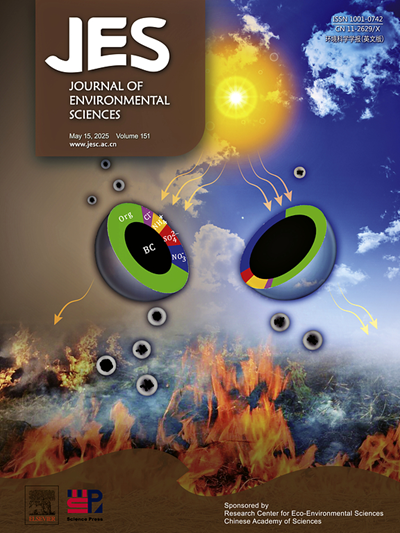Effect of PFAS serum exposure pattern on the lipid metabolism: Time to step-forward in causal inference in epidemiology
IF 5.9
2区 环境科学与生态学
Q1 ENVIRONMENTAL SCIENCES
引用次数: 0
Abstract
Associations of per- and polyfluoroalkyl substances (PFAS) on lipid metabolism have been documented but research remains scarce regarding effect of PFAS on lipid variability. To deeply understand their relationship, a step-forward in causal inference is expected. To address these, we conducted a longitudinal study with three repeated measurements involving 201 participants in Beijing, among which 100 eligible participants were included for the present study. Twenty-three PFAS and four lipid indicators were assessed at each visit. We used linear mixed models and quantile g-computation models to investigate associations between PFAS and blood lipid levels. A latent class growth model described PFAS serum exposure patterns, and a generalized linear model demonstrated associations between these patterns and lipid variability. Our study found that PFDA was associated with increased TC (β = 0.083, 95% CI: 0.011, 0.155) and HDL-C (β = 0.106, 95% CI: 0.034, 0.178). The PFAS mixture also showed a positive relationship with TC (β = 0.06, 95% CI: 0.02, 0.10), with PFDA contributing most positively. Compared to the low trajectory group, the middle trajectory group for PFDA was associated with VIM of TC (β = 0.756, 95% CI: 0.153, 1.359). Furthermore, PFDA showed biological gradients with lipid metabolism. This is the first repeated-measures study to identify the impact of PFAS serum exposure pattern on the lipid metabolism and the first to estimate the association between PFAS and blood lipid levels in middle-aged and elderly Chinese and reinforce the evidence of their causal relationship through epidemiological studies.
PFAS血清暴露模式对脂质代谢的影响:流行病学因果推断的时间
全氟烷基和多氟烷基物质(PFAS)与脂质代谢的关系已被记录在案,但关于PFAS对脂质变异性的影响的研究仍然很少。为了深入理解它们之间的关系,我们期望在因果推理方面取得进展。为了解决这些问题,我们对北京201名参与者进行了三次重复测量的纵向研究,其中100名符合条件的参与者被纳入本研究。每次访问时评估23项PFAS和4项脂质指标。我们使用线性混合模型和分位数g计算模型来研究PFAS与血脂水平之间的关系。潜在类生长模型描述了PFAS血清暴露模式,广义线性模型显示了这些模式与脂质变异性之间的关联。我们的研究发现PFDA与TC (β = 0.083, 95% CI: 0.011, 0.155)和HDL-C (β = 0.106, 95% CI: 0.034, 0.178)升高相关。PFAS混合物也与TC呈正相关(β = 0.06, 95% CI: 0.02, 0.10),其中PFDA的贡献最大。与低轨迹组相比,PFDA中轨迹组与TC的VIM相关(β = 0.756, 95% CI: 0.153, 1.359)。此外,PFDA表现出与脂质代谢相关的生物梯度。这是第一个确定PFAS血清暴露模式对脂质代谢影响的重复测量研究,也是第一个估计中国中老年PFAS与血脂水平之间关系的研究,并通过流行病学研究加强了它们之间因果关系的证据。
本文章由计算机程序翻译,如有差异,请以英文原文为准。
求助全文
约1分钟内获得全文
求助全文
来源期刊

Journal of Environmental Sciences-china
环境科学-环境科学
CiteScore
13.70
自引率
0.00%
发文量
6354
审稿时长
2.6 months
期刊介绍:
The Journal of Environmental Sciences is an international journal started in 1989. The journal is devoted to publish original, peer-reviewed research papers on main aspects of environmental sciences, such as environmental chemistry, environmental biology, ecology, geosciences and environmental physics. Appropriate subjects include basic and applied research on atmospheric, terrestrial and aquatic environments, pollution control and abatement technology, conservation of natural resources, environmental health and toxicology. Announcements of international environmental science meetings and other recent information are also included.
 求助内容:
求助内容: 应助结果提醒方式:
应助结果提醒方式:


